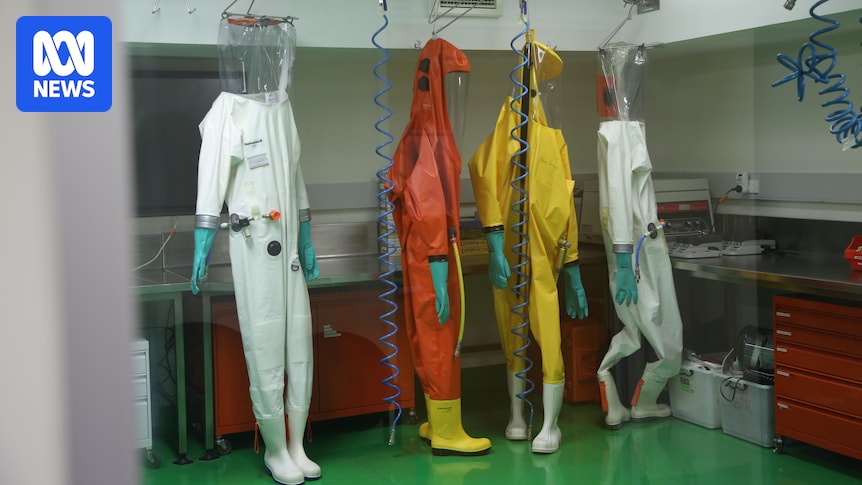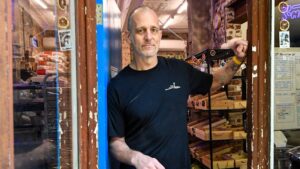
When Jennifer Barr arrives at work each morning, she undergoes a rigorous security protocol, passing through multiple checkpoints and airlocked doors before donning a fully encapsulated suit connected to a separate air supply. This is the daily routine at the CSIRO Australian Centre for Disease Preparedness (ACDP) in Geelong, where scientists handle highly transmissible and potentially lethal pathogens.
The ACDP, located about an hour southwest of Melbourne, is a facility with the highest level of biosafety. Here, scientists like Mrs. Barr, who leads the Pathogen Investigation Team, work with dangerous viruses such as Ebola and Hendra virus. “The suits protect us from the dangerous viruses that we’re working with. They’re part of our personal protective equipment that we wear every day,” said Mrs. Barr.
Australia’s Fortress Against Disease
First opened 40 years ago, the ACDP is one of only a handful of high-containment facilities in Australia, and the only one equipped to handle infected livestock at the highest biosecurity level. “There’s so many processes and procedures, and engineering to get to this point and work at this level, so it’s very safe, even though the viruses that we’re working with are not,” Mrs. Barr emphasized.
Inside the ACDP, the facility’s design is a marvel of containment engineering. According to ACDP director Debbie Eagles, the building is a “box in a box in a box,” with multiple layers of containment and negative pressure systems to prevent any potential leaks of infectious agents.
Advanced Containment and Research
The ACDP’s secure area includes an insectary for studying insect-borne diseases and a large animal facility for research on infected livestock. “That might include chickens, prawns … But we can also hold larger animals such as cattle and horses,” Dr. Eagles explained. The facility also boasts a round-the-clock laundry service and a kitchen within the secure zone to maintain strict quarantine requirements.
Every barrier of containment is duplicated or triplicated to ensure another barrier kicks in should any technology, power, or equipment fail. This meticulous approach underscores the critical role of the ACDP in responding to outbreaks of animal diseases by providing rapid diagnostic tests and genetic analysis.
Responding to Emerging Threats
Originally built as an animal health laboratory, the ACDP plays a pivotal role in diagnosing and understanding diseases such as avian influenza, African swine fever, and foot and mouth disease. In 2024, outbreaks of avian flu across several Australian states led to significant impacts on the poultry industry. ACDP scientists were instrumental in identifying different strains of bird flu and aiding authorities in managing the crisis.
Beyond diagnostics, the high-containment labs allow researchers to study disease development and spread, and to test new vaccines and therapeutics. During the COVID-19 pandemic, the ACDP conducted pre-clinical testing of the AstraZeneca vaccine. Dr. Eagles highlighted the centre’s work on Hendra virus as a prime example of its capabilities. In 1994, ACDP scientists isolated and identified Hendra virus, leading to the development of a vaccine that protects both horses and their owners.
Preparing for Future Pandemics
With a rising incidence of emerging infectious diseases, 75% of which are estimated to originate from animals, the ACDP’s work is more crucial than ever. The centre collaborates with health and science agencies to prepare for future pandemics by contributing to disease surveillance and developing diagnostic tests.
Research scientist Lynn Nazareth is exploring how viral infections spread through the nasal cavity, using human nasal tissue grown in a dish as a risk assessment tool for bird flu. This research is particularly pertinent given the recent spread of the H5N1 strain, which poses a potential pandemic threat.
“[My research] helps us understand how the virus could potentially infect a human being, especially a virus that doesn’t traditionally infect humans,” Dr. Nazareth said.
A Day in the Life of a Scientist
After a day of intensive research, scientists at the ACDP undergo a lengthy decontamination process before leaving the secure area. This includes a chemical shower, a water rinse, and a personal shower to ensure no pathogens leave the facility. “We do a lot of showering and changing clothes,” Mrs. Barr noted.
As they head home, the scientists know they will repeat this meticulous routine the next day, all in the pursuit of safeguarding public health and preparing for the next potential pandemic.






